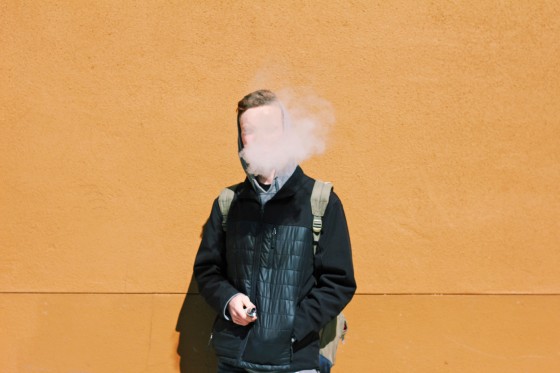
According to a research released by the surgeon general’s office on Tuesday, LGBTQ Americans are among those contributing to the survival of smoke shops as vaping’s appeal continues.
In contrast to just 16.5% of their straight counterparts, 37.8% of American people who identify as gay, lesbian, or bisexual have tried electronic cigarettes, according to the surgeon general’s 837-page study on tobacco use. Electronic cigarettes, sometimes referred to as e-cigarettes, comprise vaping pens, hookah pens, e-pipes, and e-cigars.
Further analysis of the data, which was gathered between 2019 and 2021, revealed that over half of bisexual persons had tried e-cigarettes, compared to 26.7% of lesbians and 31.8% of homosexual males. The authors pointed out that data on tobacco use among transgender Americans was not generally accessible for examination in every section of the report.
According to the survey, there are comparable differences between the country’s youth and young adults: Compared to 30.3% and 49.8% of their straight counterparts, more than 42% of young adults and 56% of high school students who identify as gay, lesbian, or bisexual reported trying e-cigarettes.
According to Kristy Marynak, a senior science adviser at the Centers for Disease Control and Prevention and a co-editor of the paper, tobacco use poses a unique health risk to LGBTQAI+ communities. According to this data, tobacco use accounts for almost one in five deaths in the US, highlighting the disproportionate impact that some groups—including LGBTQAI+ communities—bear.
According to Marynak, the study and the federal government in general view e-cigarettes and other goods containing nicotine as tobacco products. Therapeutic treatments, such as nicotine gum and patches, are the exceptions, she noted.
Since e-cigarettes are still relatively new, there is a lack of long-term studies on their effects on health. Regarding the negative consequences of certain of the chemicals frequently present in e-cigarettes, there is, nevertheless, broad scientific agreement.
The American Lung Association states that certain harmful compounds produced by e-cigarettes, such as formaldehyde, acetaldehyde, and acrolein, can result in heart and lung problems.
E-cigarettes also frequently contain nicotine. According to the CDC, nicotine can damage brain development, which lasts until age 25, in addition to being addictive and likely to exacerbate anxiety or depression.
According to Dr. Scott Hadland, chief of adolescent and young adult medicine at Harvard Medical School and Mass General for Children, he has seen an increase in e-cigarette use among young people who identify as gay, lesbian, or bisexual. He claimed that the long-standing stigma in healthcare settings is a major factor in the increased prevalence of tobacco use among LGBTQ individuals.
According to Hadland, LGBTQ+ individuals may be reluctant to seek assistance to support their attempts to quit. They may be reluctant to discuss it with their doctor because they are generally apprehensive about visiting a doctor.
According to a report released this year by KFF, a nonprofit organization that formerly operated as the Kaiser Family Foundation and focuses on health care research, LGBTQ adults are twice as likely as their non-LGBTQ counterparts to report having had a bad experience with health care in the previous three years.
According to the survey, Hadland also ascribed increased e-cigarette use among LGBTQ Americans to marketing strategies.
According to the study, tobacco corporations began marketing directly to the LGBTQ population in the mid-1990s. One such initiative was Project Scum, which promoted Camel and Red Kamel cigarettes to San Francisco’s consumer subcultures.
According to the research, tobacco companies now place ads in queer periodicals and make donations to groups that support LGBTQ rights and Pride celebrations.
Since publishing its initial report on the dangers of smoking in 1964, the surgeon general’s office has committed significant resources to the fight against cigarette smoking. According to the current survey, those efforts have mostly been successful, as only 11.5% of American people reported smoking cigarettes in 2021, down from 42.4% in 1965.
According to the report, 760,000 middle and high school children and 36 million people in the United States still use tobacco products. E-cigarettes have become the most popular tobacco product among teens and young adults in the United States since 2014.
The authors claimed that these and other noncombustible tobacco products, like nicotine pouches, could jeopardize the overall gains made in preventing and lowering youth tobacco use.
The Food and Drug Administration and the Justice Department announced in June that they would form a federal multiagency task force to address the illicit sale and distribution of e-cigarettes.
Note: Thank you for visiting our website! We strive to keep you informed with the latest updates based on expected timelines, although please note that we are not affiliated with any official bodies. Our team is committed to ensuring accuracy and transparency in our reporting, verifying all information before publication. We aim to bring you reliable news, and if you have any questions or concerns about our content, feel free to reach out to us via email. We appreciate your trust and support!
